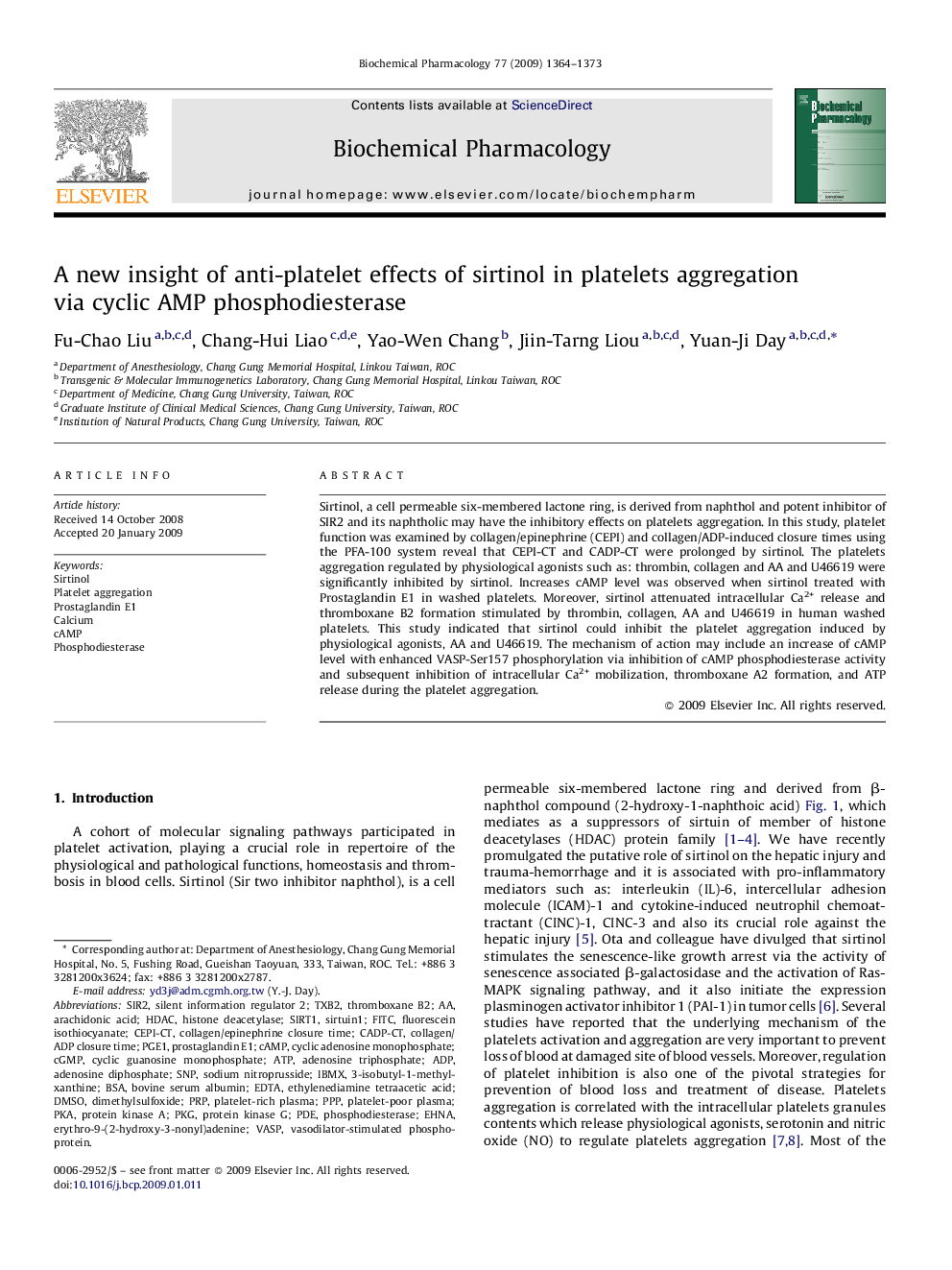| Article ID | Journal | Published Year | Pages | File Type |
|---|---|---|---|---|
| 2514129 | Biochemical Pharmacology | 2009 | 10 Pages |
Sirtinol, a cell permeable six-membered lactone ring, is derived from naphthol and potent inhibitor of SIR2 and its naphtholic may have the inhibitory effects on platelets aggregation. In this study, platelet function was examined by collagen/epinephrine (CEPI) and collagen/ADP-induced closure times using the PFA-100 system reveal that CEPI-CT and CADP-CT were prolonged by sirtinol. The platelets aggregation regulated by physiological agonists such as: thrombin, collagen and AA and U46619 were significantly inhibited by sirtinol. Increases cAMP level was observed when sirtinol treated with Prostaglandin E1 in washed platelets. Moreover, sirtinol attenuated intracellular Ca2+ release and thromboxane B2 formation stimulated by thrombin, collagen, AA and U46619 in human washed platelets. This study indicated that sirtinol could inhibit the platelet aggregation induced by physiological agonists, AA and U46619. The mechanism of action may include an increase of cAMP level with enhanced VASP-Ser157 phosphorylation via inhibition of cAMP phosphodiesterase activity and subsequent inhibition of intracellular Ca2+ mobilization, thromboxane A2 formation, and ATP release during the platelet aggregation.
Graphical abstractThe mechanism of sirtinol may include an increase of cAMP level with enhanced VASP-Ser157 phosphorylation via inhibition of cAMP phosphodiesterase activity and subsequent inhibition of intracellular Ca2+ mobilization, thromboxane A2 formation, P-selection expression and ATP release during the platelet aggregation.Figure optionsDownload full-size imageDownload as PowerPoint slide
